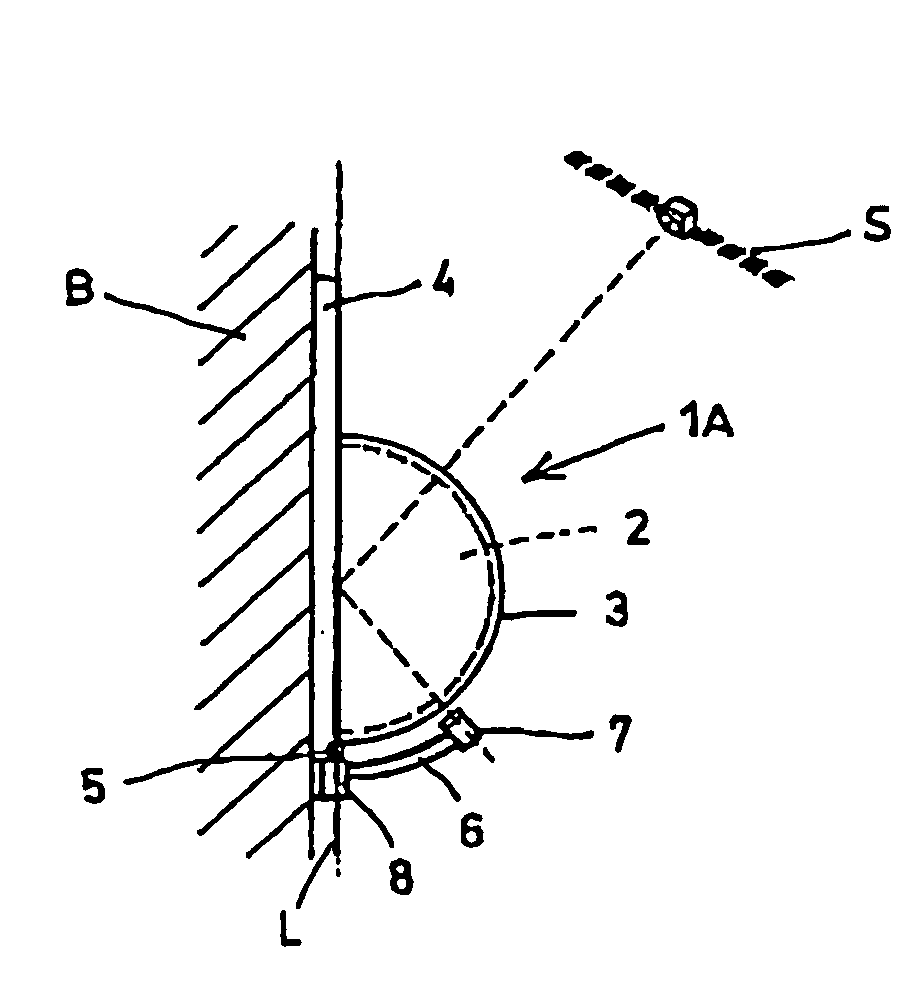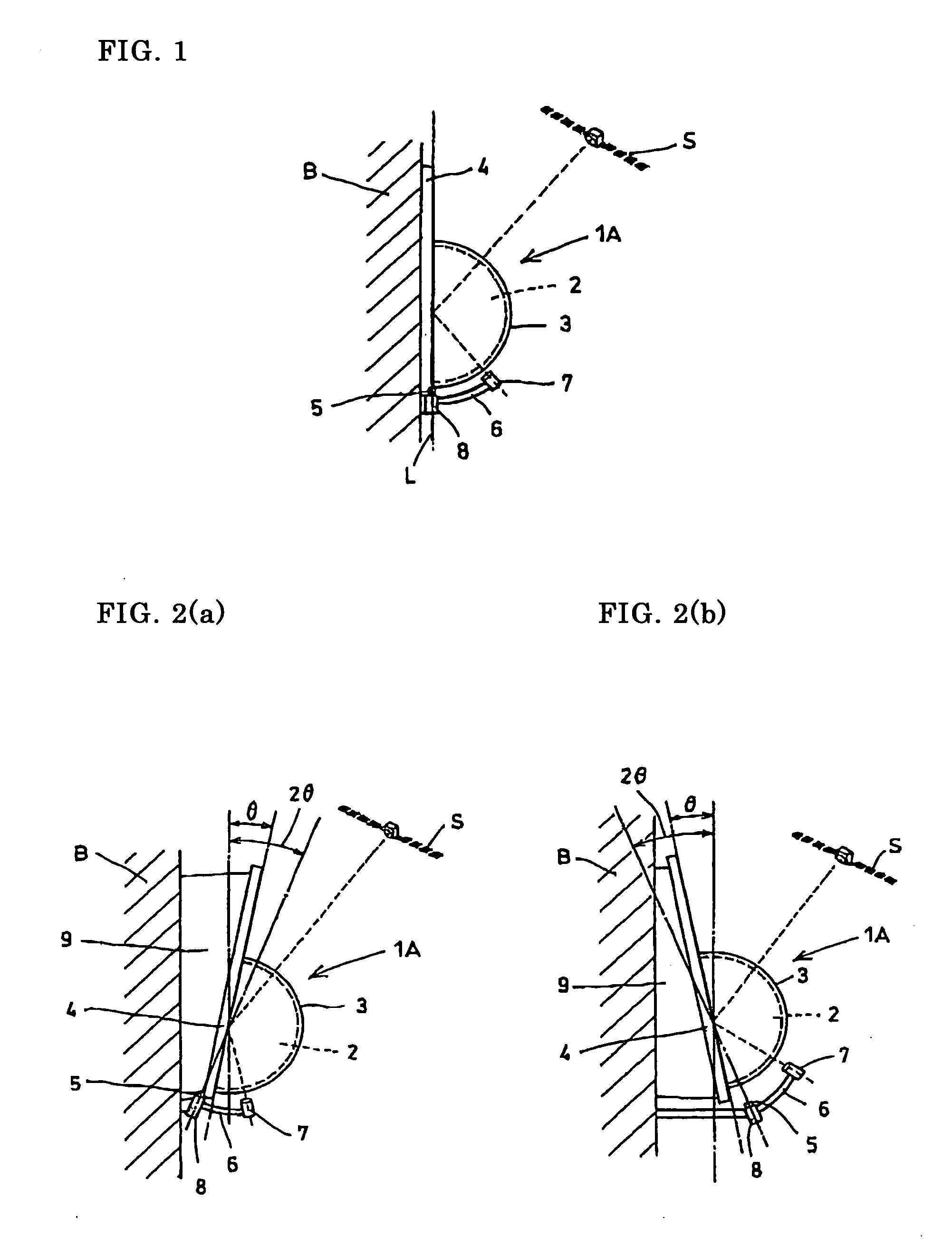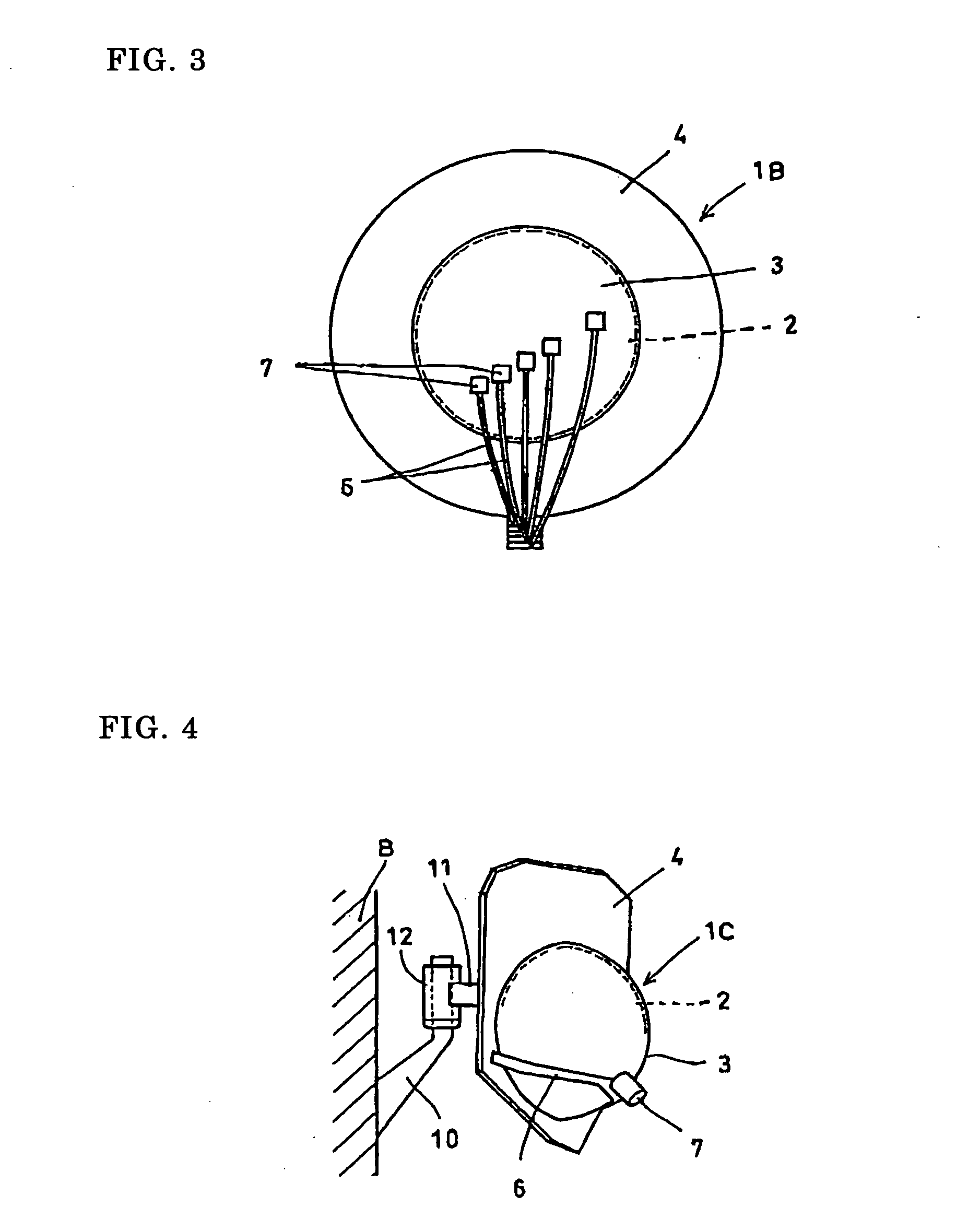Radiowave lens antenna device
a radiowave and antenna device technology, applied in the direction of antennas, electrical equipment, etc., can solve the problems of affecting the operation the parabolic antenna is inferior in electrical and mechanical durability, and the parabolic antenna can suffer from electromagnetic interference, etc., and achieve the effect of minimizing the incongruity of the parabolic antenna
- Summary
- Abstract
- Description
- Claims
- Application Information
AI Technical Summary
Benefits of technology
Problems solved by technology
Method used
Image
Examples
first embodiment
[0040]FIG. 1 shows an example of lens antenna equipment according to the The lens antenna equipment 1A comprises a hemispherical Luneberg lens 2 made of dielectric, a hemispherical cover 3 to protect the surface of the lens by covering it, a reflector 4 to be provided on a face equivalent to the cross-section made by halving a globular shape of the lens, an arm 6 supported by a fixing axis 5 assembled with the reflector 4, and a primary feed 7 held by the arm 6, all of which are unitarily assembled together.
[0041] The reflector 4 has a size larger than the diameter of the lens 2 so as to surely receive electromagnetic waves from counterpart equipment to be communicated with (in the figure, a geostationary satellite S). When the reflector 4 is attached to its installation position in a manner substantially perpendicular to the ground surface, the fixing axis 5, which is an axis about which the arm 6 turns, is located on a perpendicular line passing the center of the lens and takes a...
second embodiment
[0049]FIG. 4 shows an example of lens antenna equipment according to the In the lens antenna equipment 1C, a mast 10 to be fixed on wall B or the like is inserted in a sleeve 12 provided at the tip of a connection member 11 which is attached to the rear surface of a reflector 4, and the sleeve 12 is turnably engaged with the perpendicular axis part of the mast 10. An arm 6 for holding a primary feed 7 is structured such that its root portion is fixed to the reflector 4. The other composition is the same as the antenna equipment of FIG. 1. In the lens antenna equipment 1C of FIG. 4, the position of primary feed 7 is adjusted in advance to fit the geostationary satellite which is the counterpart equipment to be communicated with, and accordingly only adjustment needed at the installation site is to turn, relative to the mast 10, the whole antenna to the position where the receiving level of the electromagnetic wave becomes maximum. After the adjustment is completed, the sleeve 12 is ...
third embodiment
[0050] FIGS. 5(a) and 5(b) show an example of lens antenna equipment according to the In the lens antenna equipment 1D, a circular reflector 4 is used, and a circular orbit 13 which is concentric with a lens 2 is provided on the reflector 4. An arm 6 holding a primary feed 7 is formed into an arched shape to stride the lens 2, and both ends of the arm 6 are movably fixed to the circular orbit 13. The lens antenna equipment 1D of FIG. 5 is also structured such that the primary feed 7 can be moved by sliding it on the arm 6 in the arm's longitudinal direction. Thus, the primary feed 7 can be positioned to an optimum point by combining such two moving operations. The adjustment can easily be done if a line, which is to be afforded on the surface of the lens 2 and which is parallel to a plane perpendicular to the axis of the lens 2, is marked in advance on a cover 3 for covering the lens 2, and if the primary feed 7 on the arm 6 is moved, by turning the arm 6, to the target point (focu...
PUM
 Login to View More
Login to View More Abstract
Description
Claims
Application Information
 Login to View More
Login to View More - R&D
- Intellectual Property
- Life Sciences
- Materials
- Tech Scout
- Unparalleled Data Quality
- Higher Quality Content
- 60% Fewer Hallucinations
Browse by: Latest US Patents, China's latest patents, Technical Efficacy Thesaurus, Application Domain, Technology Topic, Popular Technical Reports.
© 2025 PatSnap. All rights reserved.Legal|Privacy policy|Modern Slavery Act Transparency Statement|Sitemap|About US| Contact US: help@patsnap.com



